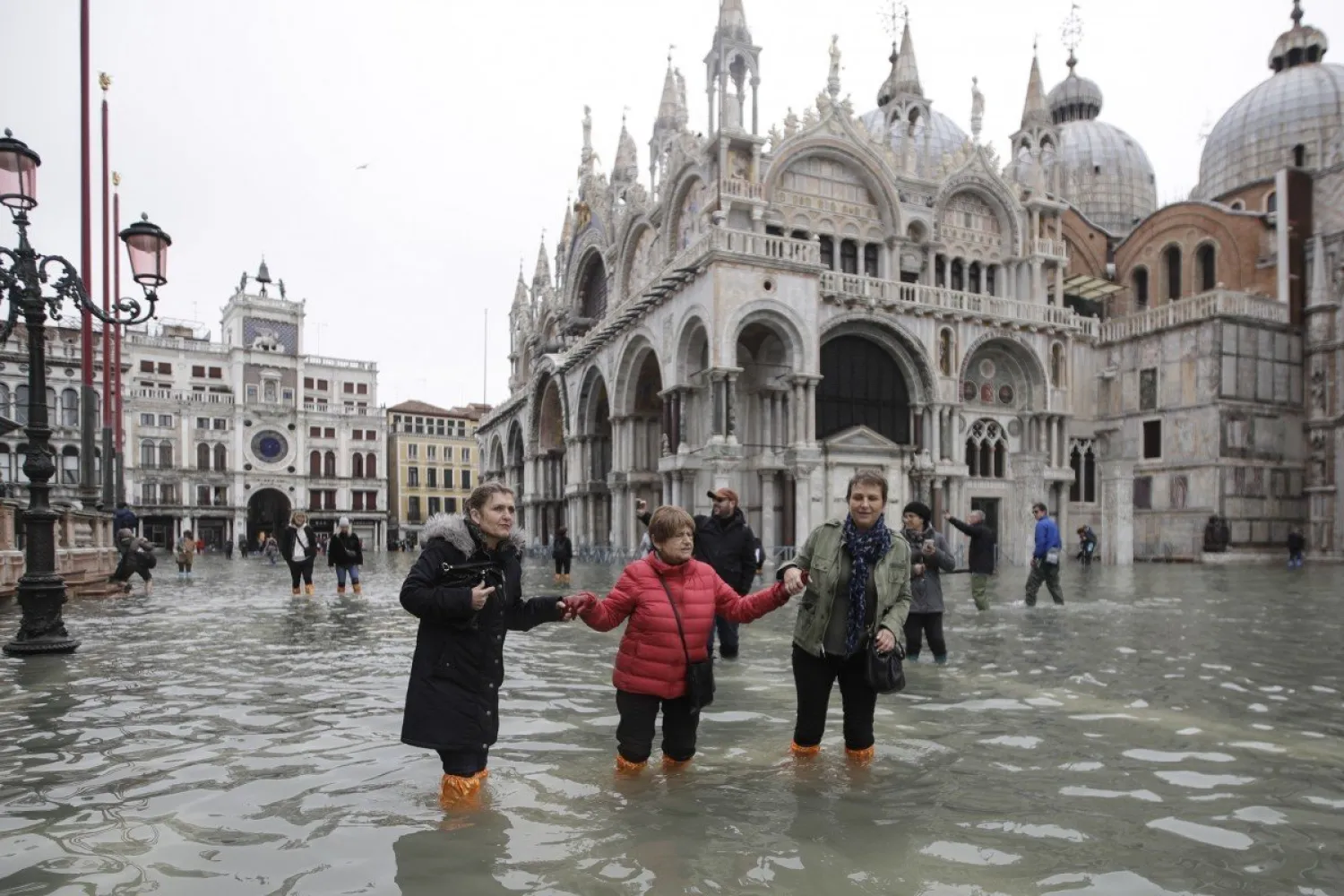Some blamed the officials, others said climate change is the culprit. But, all the people of Venice expressed their shock and anger after seeing the ruins in their city caused by the flooding water, which reached the highest tide in 50 years, beaching gondolas, trashing hotels and sending tourists fleeing through rapidly rising waters.
A report by AFP said store owners raged against those who have failed to protect the UNESCO city from the high tide. They said corruption had repeatedly delayed a barrier protection system which could have prevented the disaster.
"The city is on its knees. There's widespread devastation in the famed St. Mark's Square, which bore the brunt of the flooding," Venice mayor Luigi Brugnaro said in an interview with national broadcaster RAI.
Tourists lugging heavy suitcases waded in thigh-high galoshes or barefoot through the submerged alleys, as water taxi and gondola drivers baled sewage-tainted water out of their trashed vessels. The exceptionally intense high waters peaked at 1.87 meters. Only once since records began in 1923 has the water crept even higher, reaching 1.94 meters in 1966.
As he surveyed the damage, resident Tiziano Collarin, 59, said: "It was unbelievable, the water rose so quickly. Windows were blown out; there are those who have lost everything."
As the flood alarm rang out to warn those in the canal city that the tide, which had receded somewhat overnight, was coming in once again, he added.
The fire brigade said it had carried out over 250 operations as well as laying on extra boats as water ambulances.
Around 150 fire fighters were deployed to rescue people stranded on jetties and to recover boats broken free from their moorings.
A 78-year old was killed by electric shock as the waters poured into his home. President of the Veneto region Luca Zaia said 80 percent of the city had been submerged, causing "unimaginable damage."
German tourist Gabi Brueckner, 58, said the nighttime drama had been "horrifying." She said she feared, like many people, that climate change "will get worse and at some point Venice will drown."
A massive infrastructure project has been underway since 2003 to protect the city, but it has been plagued by cost overruns, corruption scandals and delays.
The plan involves 78 gates that can be raised to protect Venice's lagoon during high tides. But a recent attempt to test part of the barrier caused worrying vibrations and engineers discovered parts had rusted.
"They've done nothing, neglected it. It doesn't work and they have stolen six billion euros. The politicians should all be put in jail," said local Dino Perzolla, 62.
St. Mark's Square in one of the lowest parts of the city was particularly affected, its vestibule inundated with water.







